2023 was one of the worst years in history for Australian tenants, with advertised rents soaring well above the growth in wages:
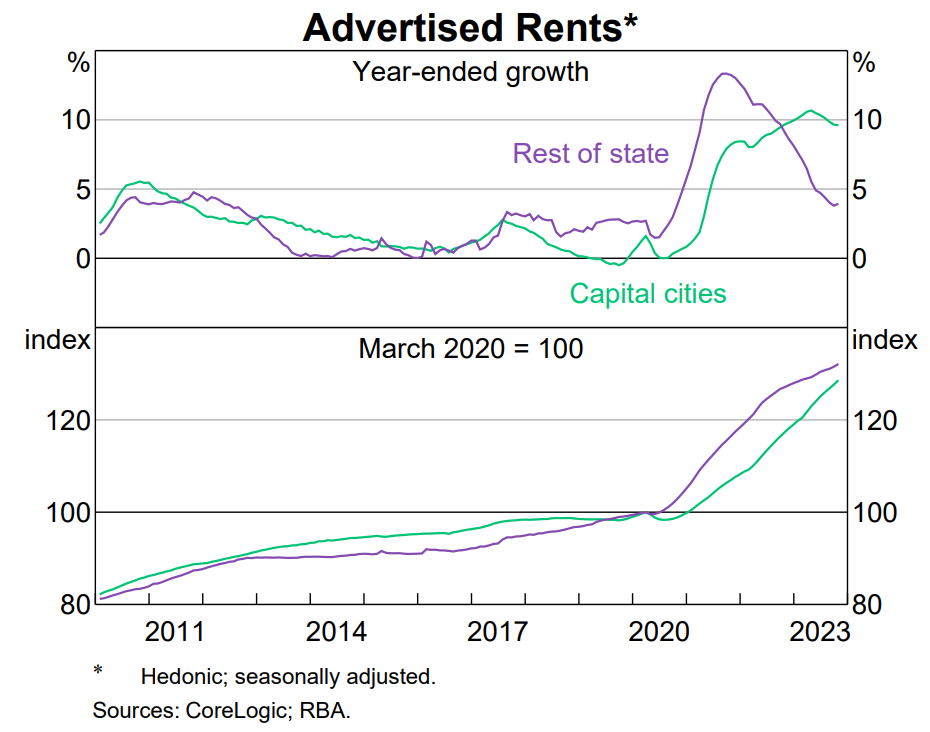
This came on the back of the national rental vacancy rate collapsing to a record low:
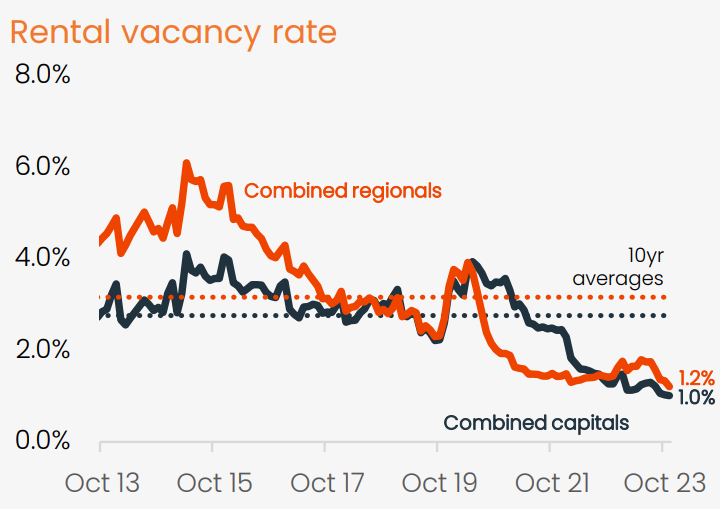
Source: CoreLogic
New data from PropTrack suggests that 2024 will be another shocker, with new rental listings reaching a historic low in December, tracking 4.6% below the previous year and 20.7% below the decade average.
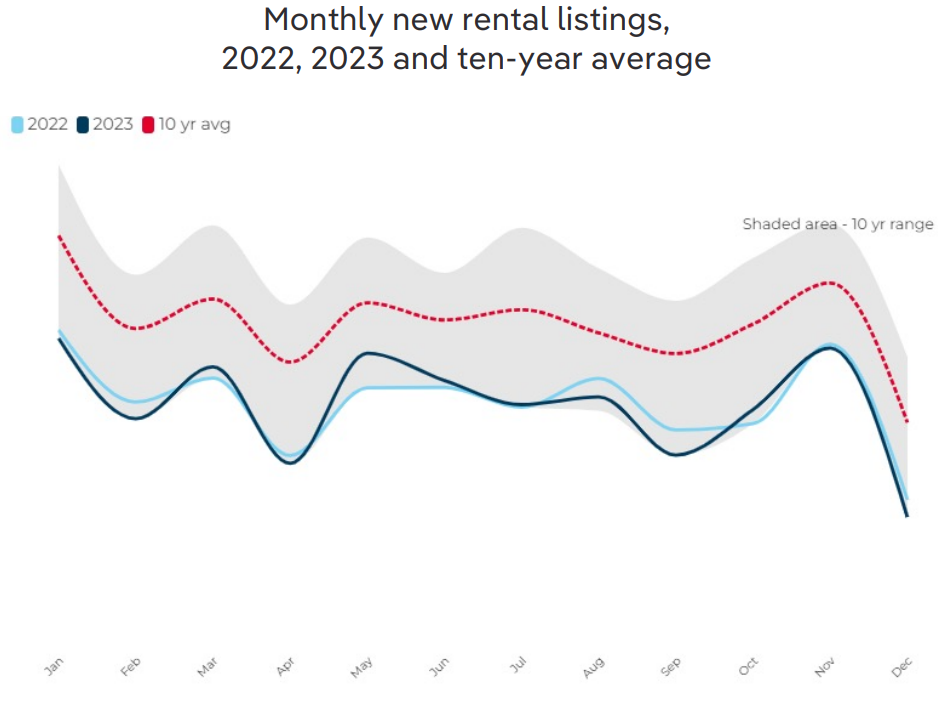
Source: PropTrack
Across the capital cities, new rental listings were tracking 5% lower over the year in December and 20.4% below the decade average.

Source: PropTrack
Total rental listings also fell to a record low in December 2023 after declining 4.7% compared to the previous year. The total number of properties available for rent nationally in December 2023 was 30.2% below the December decade average.
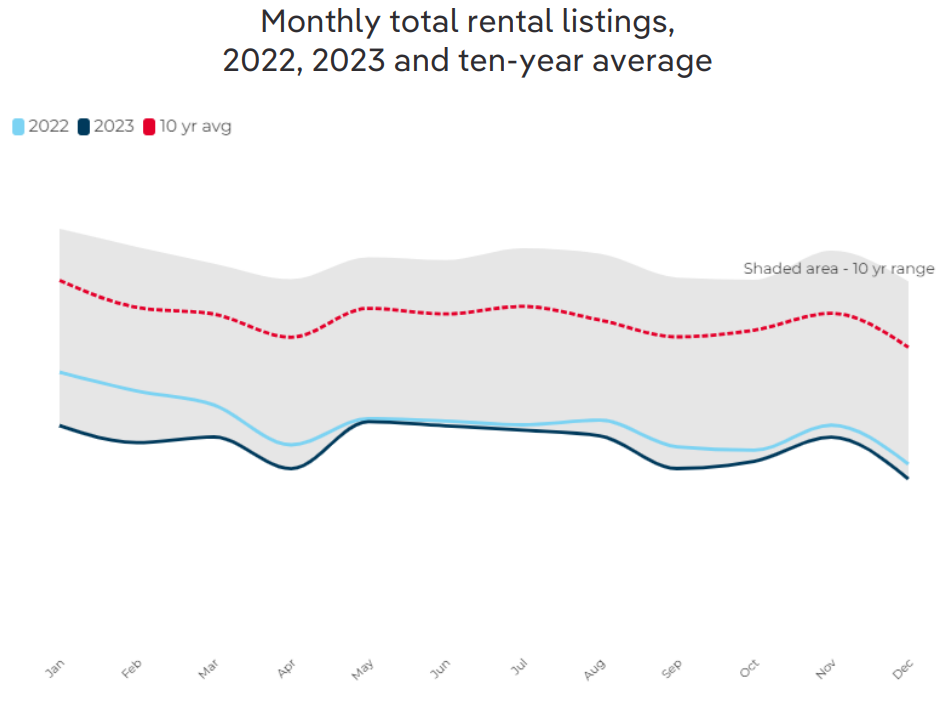
Source: PropTrack
Across the combined capital cities, total rental listings were 5.7% lower than a year ago and 29.5% lower than their December decade average.
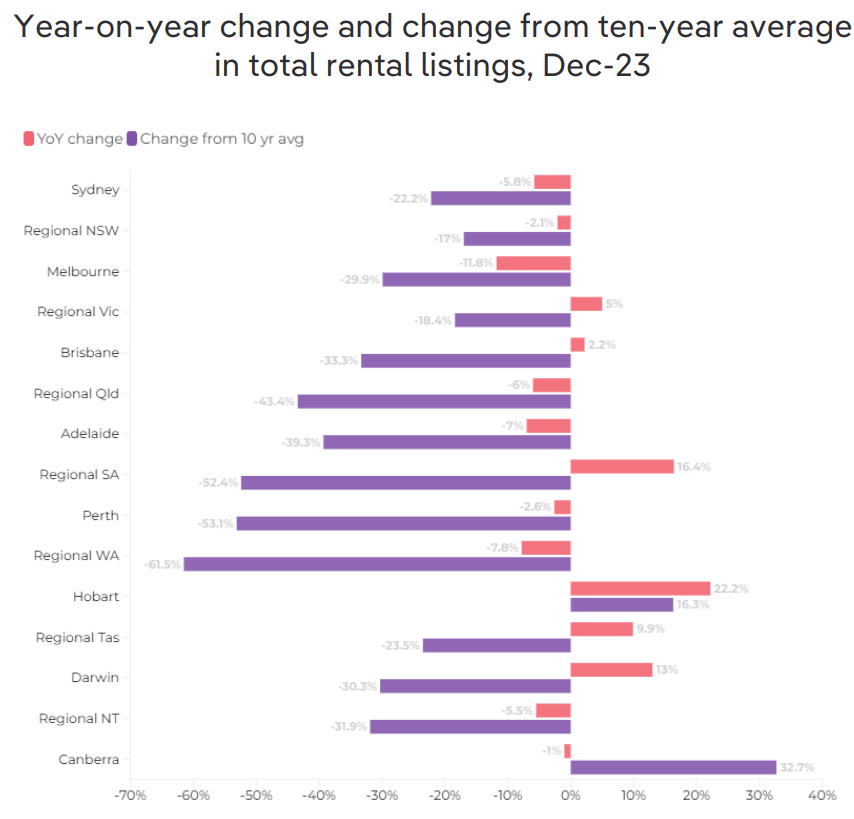
Source: PropTrack
Commenting on the results, PropTrack noted that renters will struggle in 2024:
“With rental listing volumes at historic lows and well below their decade average, rental conditions are likely to remain challenging”.
“Given ongoing strong population growth and the low volume of new rental stock under construction, it is likely that competition for rental stock will remain significant”.
“These conditions will be most prevalent in major capital cities and regional areas with strong demand and limited supply, which is likely to keep pressure on rents”.
“Prior to the pandemic era, the rental vacancy rate nationally was typically around 2.5%, highlighting just how much conditions have tightened. With limited new rental supply coming to market and persistent strong demand for rentals, the rental vacancy rate is anticipated to remain at low levels”.
“Construction remains a challenge, with high build costs, limited labour availability and decade-high financing costs resulting in dwelling approvals and commencements sitting at their lowest level in a decade”.
“The overall supply of rental stock is anticipated to remain low, while strong migration to Australia, particularly of students, is likely to drive continued strong rental demand”.
“From here, we expect rents will continue to climb, particularly in the major capital cities, due to persistent low supply and strong demand, which is being exacerbated by the rapid rate of population growth. Although population growth is forecast to slow, it will remain elevated this financial year and next”.
“Increasingly, renters will be looking for smaller and cheaper properties or will be forced into share house living to save on rental costs”.
The only genuine solution to Australia’s rental crisis is for the federal government to dramatically cut net overseas migration so that the nation’s population grows at a slower pace than housing supply.
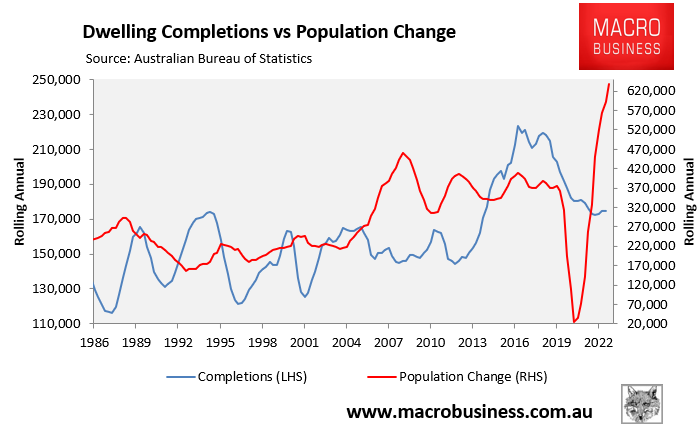
Otherwise, Australia’s rental crisis will become permanent.

